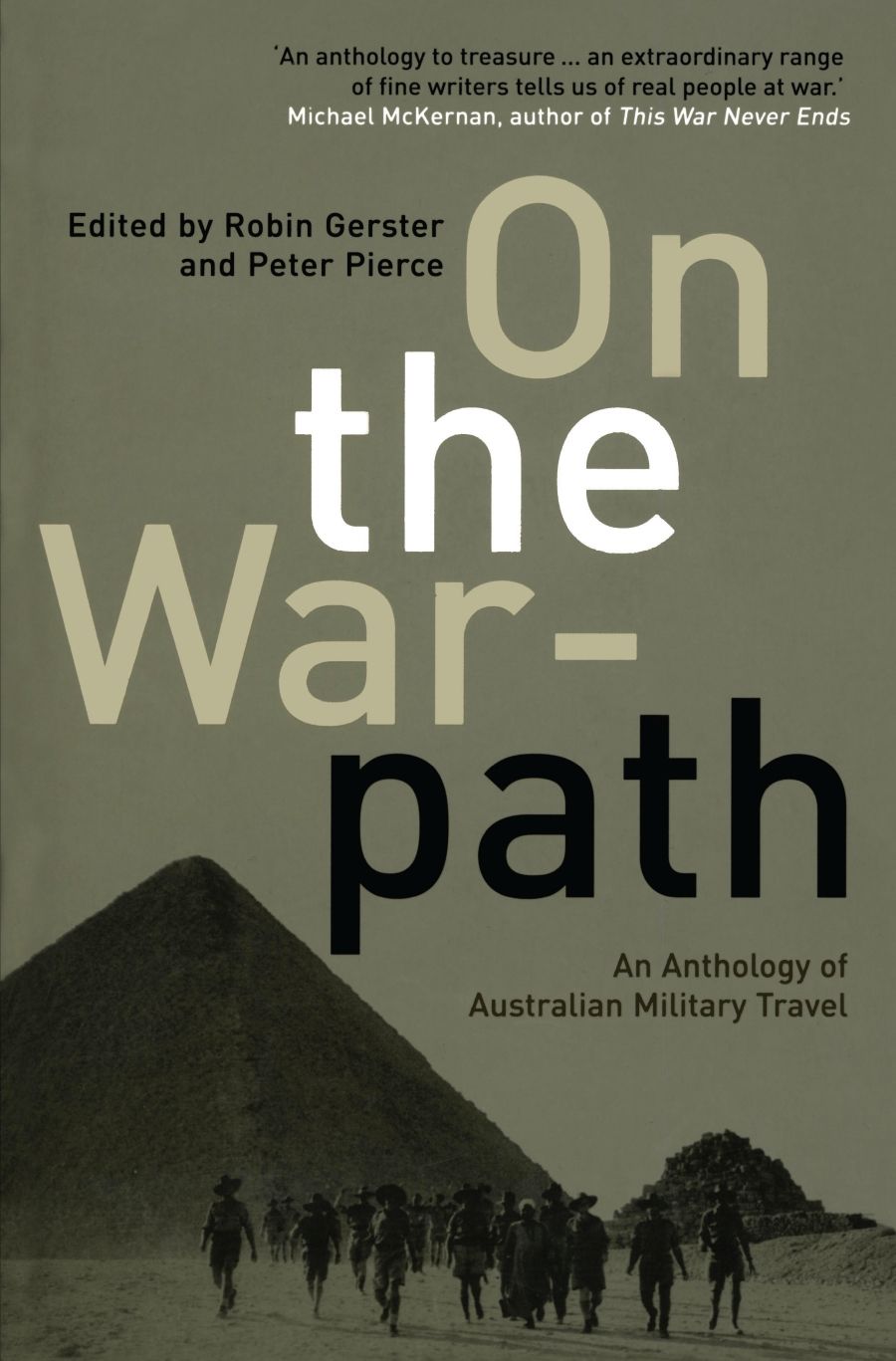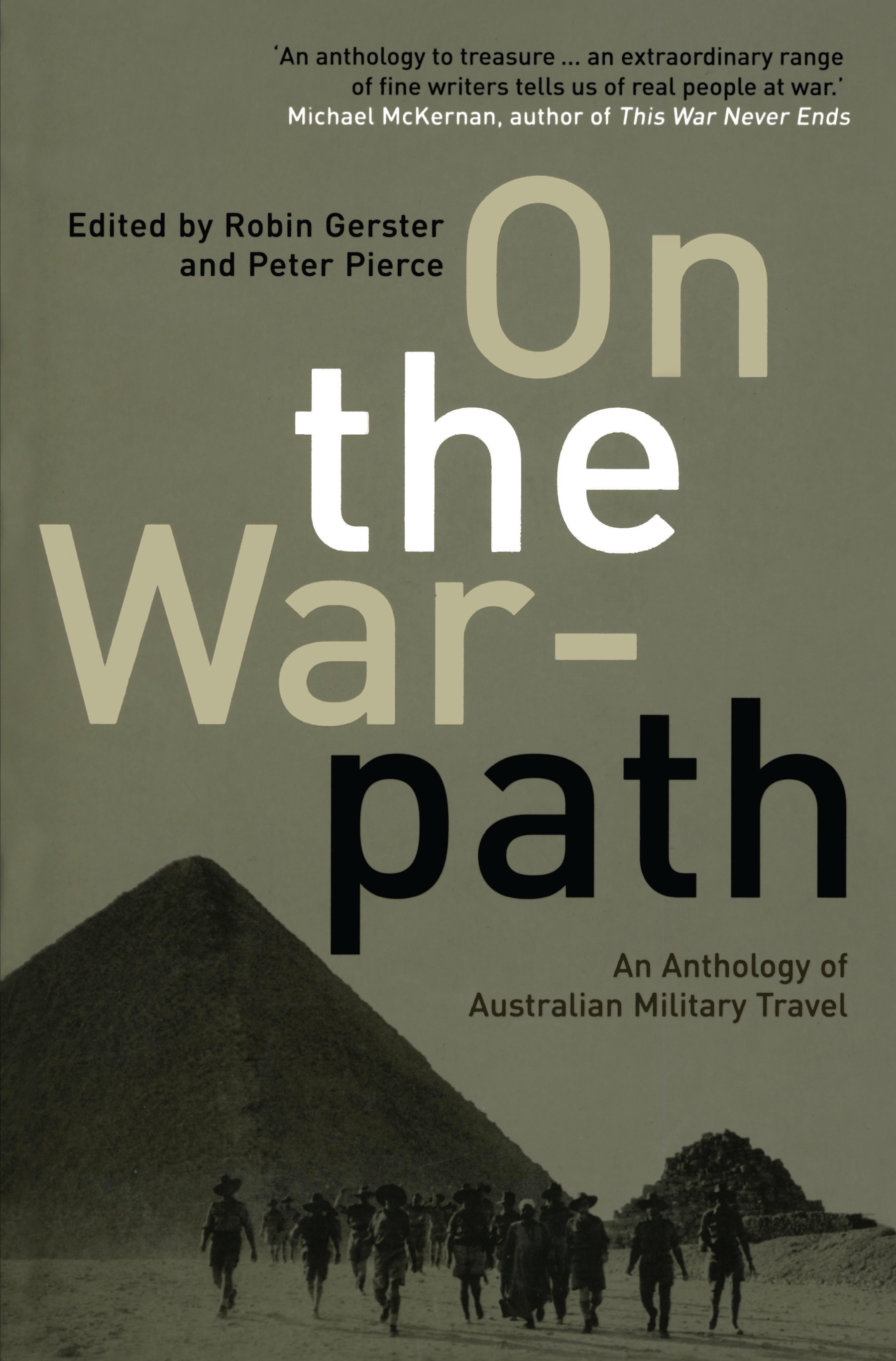
- Free Article: No
- Contents Category: Military History
- Custom Article Title: Fakes and Heroes
- Review Article: Yes
- Article Title: Fakes and Heroes
- Online Only: No
- Custom Highlight Text:
Note especially the last word in the subtitle – ‘travel’. This book is not, or not chiefly, about strategy and battles. It is about getting to the war, or passing through an operational area and (with luck) getting home again; it is about visiting war cemeteries, battlefields and memorials, or revisiting them, sometimes decades later.
You may think this a wispy and slender thread upon which to string 350 pages of book. I thought so myself when I picked it up, and the misgiving recurred several times during the perusal. (Since a peacetime visit to Auschwitz is neither military nor Australian, Lily Brett’s piece seemed to have strayed in by mistake.) But the thread held – just – and I am grateful to the editors for teaching me much that I didn’t know, or had not understood.
- Book 1 Title: On the Warpath
- Book 1 Subtitle: An anthology of Australian military travel
- Book 1 Biblio: MUP, $34.95 pb, 350 pp
- Book 1 Cover Small (400 x 600):

- Book 1 Cover (800 x 1200):

How does this square with what I saw for myself: young soldiers getting the guns forward through the mud; an Australian patrol of which every man risked his life to bring in a wounded black policeman; above all, the usual taciturn modesty of boys whose subsequent decorations established them as heroes. Well, speak as you find; even among anthologists a measure of vocal self-enthusiasm has been detected now and then.
The editors have read widely indeed, and have, for the most part, selected their excerpts with some discrimination. The catholicity of their choice is confirmed, as their strength of stomach demonstrated, by the inclusion of pieces by Wilfred Burchett and John Pilger. Familiar names abound – and others less famous. That doughty old war correspondent Banjo Paterson writes from the Sudan, and later from the Boxer Rebellion in China. Also in the period of what the editors call ‘Colonial Wars’, Julia Anderson, an Australian nurse in South Africa, writes superbly.
The leading pieces from the Great War come, as we should expect, from Frederic Manning (The Middle Parts of Fortune), Leonard Mann (Flesh in Armour) and Martin Boyd (A Single Flame). About a dozen others contribute their own illustrations. There is John Monash, lucid as ever in long letters to his wife. Henry Gullett (senior) is strangely moving as he reflects, from the Holy Land, on the young Australian light horsemen, in ‘emu feathers, heavy boots and clinking spurs, proceeding along the Via Dolorosa or gathered around the traditional Stations of the Cross’. We see the official historian, C.E.W. Bean, distracted briefly from his graver studies, and conscripted to write a short ‘self-help’ manual for the troops. It might well have been titled ‘How not to catch the clap while on leave’.
The women of World War I write with great strength and style. Mollie Skinner served as a nurse in India and Burma, and later wrote a picaresque novel titled Tucker Sees India. Until now, I had thought of her only as D.H. Lawrence’s collaborator in The Boy in the Bush. Louise Mack, an Australian journalist who had worked on the Bulletin, covered the fall of Antwerp to the Germans in 1914. With superb sangfroid, working independently, she was a pioneer female war correspondent a quarter of a century ahead of Hemingway’s colleague in Spain, the celebrated Martha Gellhorn.
A certain lack of balance becomes apparent with World War II. That conflict involved vastly greater numbers of Australian servicemen, spread from Iceland to Japan, yet it scores fewer excerpts than World War I, and not all of them come out of the top drawer. For example, their ‘distinguished war correspondent’ George Johnston was partly a fake, who filed graphic ‘New Guinea’ eyewitness reports while sitting in Australia. Eric Lambert (The Twenty Thousand Thieves) and Lawson Glassop (We Were the Rats) are second-rate material, in my opinion. They are more than counterbalanced, happily, by the likes of Kenneth Slessor, Osmar White, Nancy Wake and, above all, Ray Parkin; this permanent Navy petty officer’s Into the Smother is a wonderful piece of writing.
One supposes that all anthologists must be driven demented by ‘Why did you put this in?’ or ‘Why did you leave that out?’ And indeed you can’t please everyone. But the editors do seem to have passed over stories of World War II riches. For example, it would have been a pretty piece of symmetry to have included a contribution from the second Henry Gullett (‘Jo’), as foil to his father Sir Henry’s writing from Palestine in 1915. Jo’s Not As a Duty Only offered them a piece perfectly fitting their ‘travel’ prescription.
Attention to elementary editorial matters, such as proof-reading, would have given us a better book. (It is a shock to see ‘Miltiades’ spelt wrongly.)
On the Warpath is a flawed book; its lack of balance and proportion alone disqualify it as a suitable addition to school libraries. But we are on the whole better off having it than not. Its existence adds a little to our growing sense of nationhood so poignantly expressed in the fine extract from Georgia Savigne in Vietnam, though she had had her reservations about the war. She was standing by the cross to the memory of Australian soldiers who fell at their great battle at Long Tan: ‘They were there on my behalf, which means that as long as I lived I must not deny them. It was my first intimation of belonging to a people, to a race.’


Comments powered by CComment